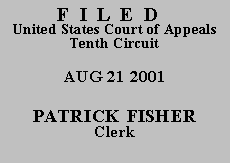

| UNITED STATES OF AMERICA, | |
| Plaintiff-Appellee, | |
| v. | |
| EDWARD L. PYEATT, | |
| Defendant-Appellant. |
Federal prisoner Edward L. Pyeatt, proceeding pro se, seeks to appeal from the denial of his 28 U.S.C. § 2255 motion to vacate, set aside, or correct his sentence. Appellant pled guilty to one count of conspiring to possess with intent to distribute more than one kilogram of methamphetamine, in violation of 21 U.S.C. § 846, and one count of using and carrying a firearm during and in relation to a drug-trafficking crime, in violation of 18 U.S.C. §§ 2 and 924(c). In his § 2255 motion, Appellant contended that his trial attorney coerced him into signing a plea agreement while he was incompetent and under the influence of medication. The district court denied both Appellant's § 2255 motion and his application for a certificate of appealability. Appellant then sought to appeal the district court's denial of his § 2255 motion and requested a certificate of appealability.
In order for this court to grant a certificate of appealability, Appellant must make a "substantial showing of the denial of a constitutional right." 28 U.S.C. § 2253(c)(2). When the district court has dismissed the case on procedural grounds without considering the underlying constitutional claim, Appellant must demonstrate that "jurists of reason would find it debatable whether the petition states a valid claim of the denial of a constitutional right and that jurists of reason would find it debatable whether the district court was correct in its procedural ruling." Id.
In this case, the magistrate judge found that Appellant's § 2255 motion was time-barred under the one-year statute of limitations period set forth in the Antiterrorism and Effective Death Penalty Act of 1996, which amended 28 U.S.C. § 2255 by adding a provision which precludes a prisoner from filing a § 2255 motion more than one year after the conviction becomes final. The magistrate judge found that Appellant's motion was untimely by more than a year and a half. Appellant's conviction became final on April 10, 1998. He filed his § 2255 motion on November 6, 2000.
The magistrate judge recommended that the motion be denied and the case dismissed. The district court adopted that recommendation. On appeal, Appellant does not argue for a tolling of the limitations period. In summary, we have no reason to doubt the district court's holding that Appellant's motion was barred by the applicable statute of limitations. Therefore, we hold that jurists of reason would not "find it debatable whether the district court was correct in its procedural ruling." Slack v. McDaniel, 529 U.S. 473, 484 (2000).
For the reasons stated above, Appellant's request for a certificate of appealability is DENIED and the case is DISMISSED.
Entered for the Court
Monroe G. McKay
Circuit Judge
*. This order and judgment is not binding precedent, except under the doctrines of law of the case, res judicata, and collateral estoppel. The court generally disfavors the citation of orders and judgments; nevertheless, an order and judgment may be cited under the terms and conditions of 10th Cir. R. 36.3.